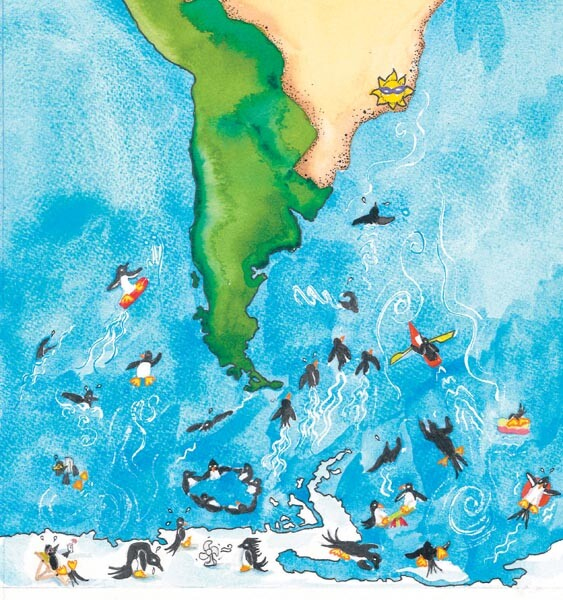
Illustrations by Denise Shaw
Sir Francis Drake in 1578, may or may not have dared to cross the passage now named for him at the bottom of the world, some say opting instead to take the Strait of Magellan in his southern voyages. If you are travelling to Antarctica however, you will most likely make the crossing via Ushuaia, Argentina. Infamous for its volatility and mythology, the Drake Passage has become one of the most talked about sailing routes in the world.
What makes it so special? Hopefully, nothing – and on your voyage you may well experience the “Drake Lake”, where seas are calm and sea-sickness a forgotten concern. If not, the “Drake Shake” may await you, waters with a strong eastward current, and passing through at an estimated 125–200 million cubic yards per second.
There is no best time to cross. Antarctica expeditions usually run from October to March, during the summer season, and the Passage can be equally unpredictable throughout this time period.
Your smartly designed ocean-going vessel is uniquely equipped for this journey, with modern forecasting, more advanced technology, and developments in the design to make your time at sea as comfortable as it is safe.
The crossing generally takes one and a half to two days, and can be filled with rich wildlife viewing, dolphins, whales, and seabirds, depending on conditions. To ward off sea-sickness, it is best to be out on deck as much as possible.
Be prepared however for ever-changing temperatures across the Passage, particularly at the Antarctic Convergence, (an area where the cold Antarctic surface water meets the warmer Sub-Antarctic water—the accepted boundary to Antarctica). Expect temperatures ranging from about 5°C (41°F) in the north to -3°C (26°F) in the south. That complimentary expedition jacket suddenly makes all the sense!
Most all expedition operators are stocked with sea-sickness remedies and doctors on board to assist in your crossing. Always best to consult your own practitioner prior to leaving home as well to alleviate concerns. Staying well hydrated, avoiding heavy meals, getting fresh air, and adjusting to your “sea legs” will go a long way toward your crossing success.
Once you emerge into the Antarctic peninsula proper, the waters calm and the scale of new terrain overwhelms any memory of your crossing. You can relax and enjoy the 7th Continent until it’s time to traverse the Passage again on your home-bound return.